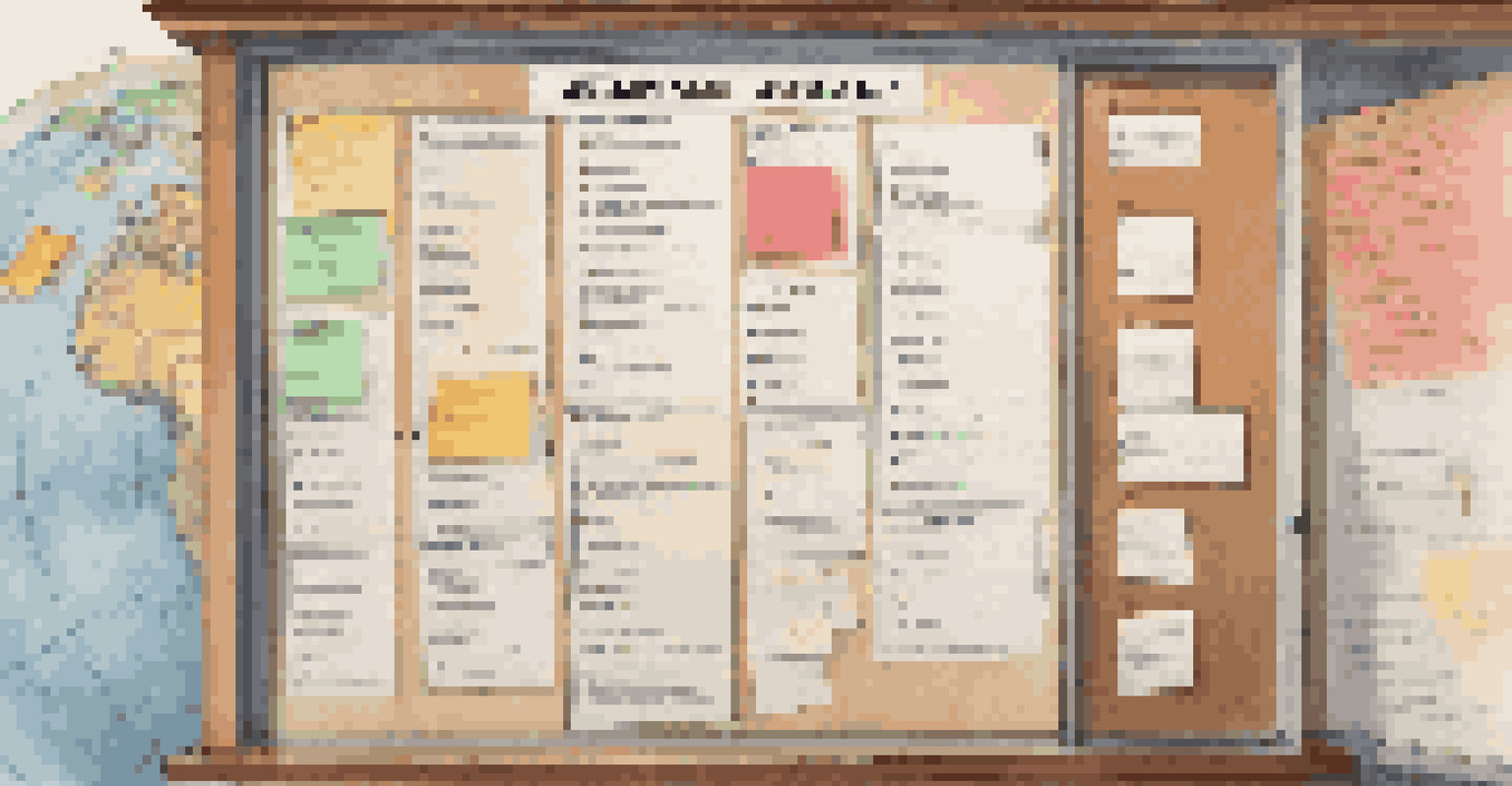Emergency Preparedness: Creating a Travel Safety Plan

Understanding the Importance of a Travel Safety Plan
A travel safety plan is your roadmap for navigating unexpected situations while away from home. Emergencies can happen anywhere, whether you're exploring a new city or lounging on a beach. By having a plan in place, you give yourself peace of mind and a clear strategy for handling crises, from natural disasters to medical emergencies.
By failing to prepare, you are preparing to fail.
Imagine being in a foreign country and suddenly facing a natural disaster, like an earthquake or a hurricane. Without a plan, the chaos can be overwhelming. However, with a well-thought-out strategy, you're equipped to take appropriate actions quickly, ensuring your safety and the safety of your travel companions.
In short, a travel safety plan is not just a good idea; it’s an essential part of responsible travel. It helps you stay calm and collected in the face of adversity, allowing you to enjoy your trip with confidence.
Assessing Risks Before Your Trip
Every destination has its own set of risks, so it's crucial to assess these before you embark on your journey. Research the location for potential natural disasters, political instability, or health risks, such as disease outbreaks. Websites like the CDC and State Department can provide valuable insights.

For instance, if you're traveling to an area prone to hurricanes, understanding the hurricane season and knowing evacuation routes can be lifesaving. Similarly, if you're heading to a region with health concerns, make sure you’re updated on necessary vaccinations and health advisories.
Importance of a Travel Safety Plan
Having a travel safety plan allows you to navigate emergencies calmly and effectively while enjoying your trip.
Taking the time to assess risks not only prepares you for potential issues but also helps you choose destinations wisely. This proactive step enhances your overall travel experience, allowing for safer adventures.
Creating an Emergency Contact List
An emergency contact list is a crucial component of your travel safety plan. This list should include local emergency services, your country's embassy, and contacts back home who can assist in case of an emergency. Keep this list easily accessible, whether on your phone or printed out.
An ounce of prevention is worth a pound of cure.
Consider adding contacts for local friends or acquaintances who can help if needed. Also, include important numbers like your insurance provider in case medical assistance is required. Having these contacts at your fingertips can save precious time during stressful situations.
Remember to inform your loved ones about your travel itinerary and how they can reach you. Regular check-ins can provide peace of mind for both you and your family, making your travels safer and more enjoyable.
Packing an Emergency Kit for Travel
An emergency kit is a vital part of your travel safety plan. This kit should include essentials like first-aid supplies, flashlights, batteries, and non-perishable food items. Depending on your destination, you might also want to include specific items like insect repellent or sunscreen.
Think of your emergency kit as your safety net. When the unexpected happens, having these supplies on hand can make a significant difference. For example, if you get caught in a sudden storm while hiking, having a flashlight and snacks can keep you safe and comfortable while you wait for help.
Assess Risks Before Traveling
Researching potential risks at your destination empowers you to make informed choices and enhances your overall travel experience.
Make sure to customize your kit based on your travel plans and the environment you’ll be in. A well-prepared emergency kit can provide a sense of security, allowing you to focus on enjoying your travels.
Understanding Local Emergency Procedures
Every destination has its own emergency procedures, and understanding them can greatly enhance your safety. Before you travel, familiarize yourself with local emergency numbers, evacuation routes, and protocols for natural disasters. This knowledge can be crucial in a crisis.
For instance, in some countries, emergency services may be reached through different phone numbers than what you're used to. Knowing this information ahead of time can save critical minutes when every second counts. Additionally, knowing where to go in case of an evacuation can prevent panic and confusion.
Take a few moments to research and note down these procedures. This small effort can dramatically change your response during an emergency, ensuring you act swiftly and effectively.
Staying Informed During Your Travels
Staying informed is key to navigating your travel safety plan effectively. Utilize apps and local news sources to keep track of any developments in your area, such as severe weather alerts or civil unrest. Being informed empowers you to make timely decisions.
For instance, if a storm is approaching your destination, having access to real-time updates allows you to adjust your plans accordingly—whether that means finding shelter or choosing to leave the area altogether. Mobile apps can send instant alerts, making it easier to stay on top of any situation.
Pack an Emergency Kit
An emergency kit with essential supplies can provide security and comfort during unexpected situations while traveling.
In addition, maintaining an awareness of your surroundings and trusting your instincts can help you avoid potential dangers. A proactive approach to information can be your best defense when traveling.
Reviewing and Practicing Your Plan
Creating a travel safety plan is only the first step; reviewing and practicing it is equally important. Take the time to go over your plan with your travel companions, ensuring everyone knows what to do in case of an emergency. This shared understanding can make all the difference.
Consider conducting a practice drill, especially if you're traveling to a location prone to natural disasters. For example, if you're headed to an area that experiences earthquakes, practicing how to 'drop, cover, and hold on' can prepare everyone for the real thing.

Regularly reviewing your plan also ensures that it stays relevant as your travel plans change. By making safety a priority and practicing your strategy, you foster a sense of security, allowing you to enjoy your adventure to the fullest.